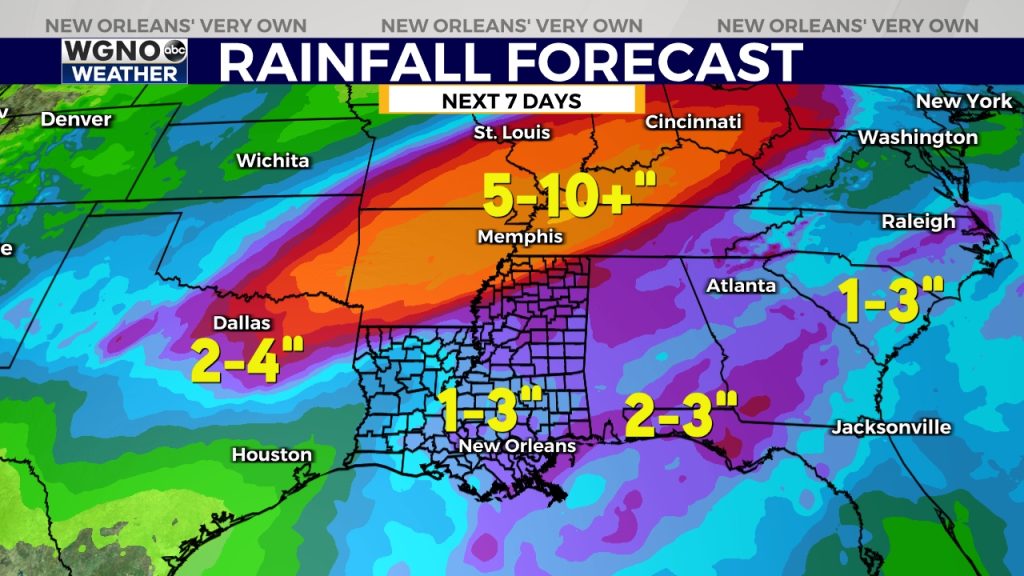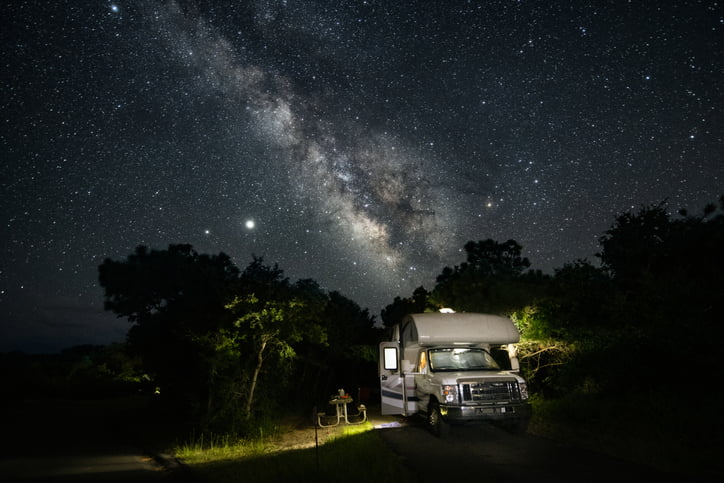Brace yourselves, Texas — we’re in for some wild weather this Friday night into Saturday. A severe thunderstorm is set to roll in, bringing everything from heavy rain to hail and damaging winds, possibly causing some flash flooding. If you’re planning to be out and about, now is the time to make sure you’re prepared. These storms won’t be messing around, so let’s dive into what you can expect and how to stay safe.
What’s Coming?
It all kicks off Friday evening as a cold front pushes its way across the state, sparking a line of severe thunderstorms. First, we’ll get hit with heavy rain, and that could lead to some flash flooding, especially in places prone to puddling or low-lying areas. So, don’t be surprised if the roads suddenly start to look like rivers, and keep in mind that just a few inches of water can make driving dangerous.
But the rain is just the beginning. Hail is a real possibility. Small pieces of hail are likely, but bigger chunks of ice could also make an appearance. Hail can do serious damage, so if you’re caught out in it, find cover quickly to protect yourself and your car.
The winds are probably going to be the scariest part of this storm, though. We’re looking at gusts reaching 60-70 mph in some areas. These winds are strong enough to take down trees, power lines, and scatter debris all over the place, so you’ll want to stay inside once the storm hits.
Where Will the Storm Hit?
The storm’s reach will cover a large portion of the state, from Dallas-Fort Worth to Austin, San Antonio, Houston, and Corpus Christi. If you’re in Central Texas, you’re probably going to feel the brunt of the storm, but don’t think you’re in the clear if you’re farther south or east — the weather will still be rough. Expect the worst of the storm to hit late Friday night, continuing into Saturday morning, with some lingering showers and gusty winds into the afternoon.
What Are the Risks?
-
Flash Flooding: The rain could be heavy enough to flood roads, especially in areas that are prone to standing water. If you’re driving, be cautious — even a small amount of water on the road can be enough to send your car skidding. And if you live in a flood-prone area, make sure you’re ready to take action if the water starts rising.
-
Hail: While the size of the hailstones will vary, even small hail can cause significant damage to your car and windows. Larger hail can do some serious damage to your home or crops. If you’re outside when the hail starts, don’t wait around — find shelter fast.
-
Strong Winds: Winds of 60-70 mph are no joke. These gusts are strong enough to knock down trees and power lines, and they’ll also be tossing debris around. If you’re outside when those winds pick up, it could get dangerous in a hurry, so stay indoors once the storm starts.
How to Stay Safe:
-
Take Shelter ASAP: If you’re outside when the storm hits, find shelter immediately — a sturdy building is best, but even a car will do in a pinch. And definitely avoid seeking shelter under trees or anything that could be knocked down by the wind.
-
Secure Loose Items: Before the storm arrives, go ahead and secure any outdoor items — like patio furniture, trash cans, or toys — that could get tossed around in the wind. It only takes a few minutes, but it could save you from having to chase down your stuff later.
-
Don’t Drive Unless You Have To: If you can, stay off the roads when the storm hits. The rain could flood streets quickly, and driving through that is a huge risk. If you must drive, slow down, leave plenty of distance between vehicles, and avoid flooded areas at all costs.
-
Stay Away from Windows: The strong winds could shatter windows, so stay away from glass doors and windows while the storm is raging. Head to an interior room in your house to stay safe.
-
Prepare for Power Outages: High winds can bring down power lines, so be ready for the possibility of a power outage. Charge your phone before the storm hits, and have flashlights or battery-powered lanterns on hand. It’s always better to be over-prepared than to be caught in the dark.
-
Keep Up with Alerts: The weather can change quickly, so make sure you’re getting the latest updates. Set up severe weather alerts on your phone and pay attention to any warnings from local authorities.



